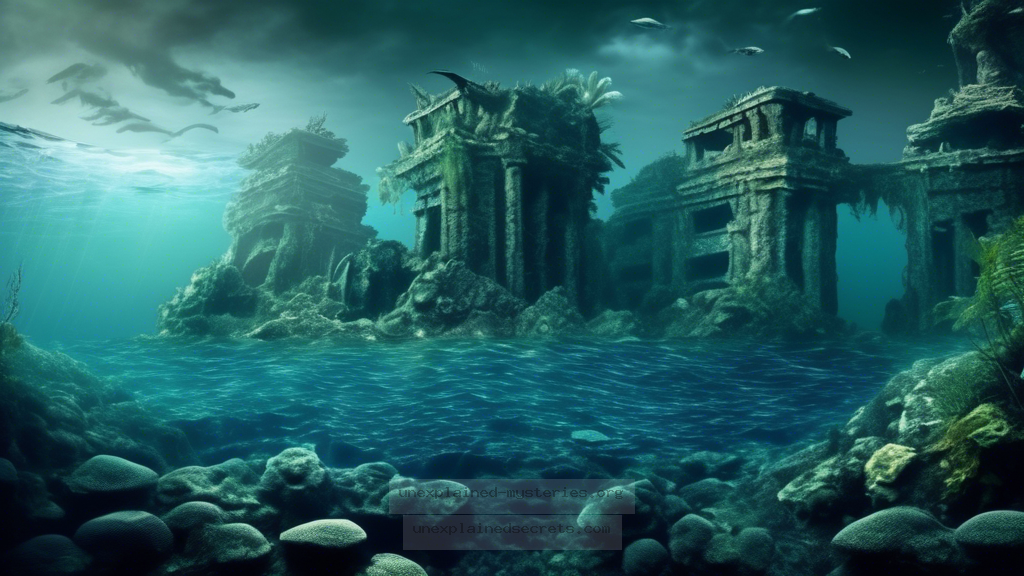What Causes the Mysterious Disappearance of the Gakkel Ridge’s “Lost City”?
What Causes the Mysterious Disappearance of the Gakkel Ridge’s “Lost City”?
The ocean floor is home to many mysteries, but few are as captivating as the enigmatic “Lost City” located on the Gakkel Ridge in the Arctic Ocean. This geological wonder, discovered in 2000, consists of towering carbonate structures that resemble ancient cities. Yet, the question lingers: what causes this so-called “Lost City” to exist in a place that defies conventional understanding of geological processes? Exploring this mystery is essential, not only for the advancement of geological sciences but also for our understanding of life in extreme environments and potential extraterrestrial habitats.
Historical Context: The Discovery of the Lost City
The Lost City was discovered during a research cruise led by scientists from the Ocean Exploration and Research (OER) program, which utilized an autonomous underwater vehicle (AUV) to explore the Gakkel Ridge. This ridge is one of the least-explored mid-ocean ridges, located about 2,500 meters beneath the Arctic Ocean’s surface. The discovery was groundbreaking; instead of the expected volcanic formations, researchers found towering structures made primarily of carbonate, suggesting that the area was influenced by hydrothermal activity.
Prior to this finding, scientists believed that hydrothermal vents primarily produced sulfide structures. However, the carbonate chimneys of the Lost City were unlike anything seen before, leading to questions about their formation and the ecosystems they supported. The initial research suggested that the structures were not just geological formations but also habitats for diverse microbial life, challenging our understanding of life’s resilience in extreme conditions.
Core Concepts: Understanding Hydrothermal Vent Communities
Hydrothermal vents are fissures on the seafloor that emit heated water rich in minerals. These vents support unique ecosystems, primarily fueled by chemosynthesis rather than photosynthesis. The discovery of the Lost City has expanded our understanding of these ecosystems. The carbonate structures are formed through a process known as serpentinization, where seawater interacts with ultramafic rocks, leading to chemical reactions that produce hydrogen gas. Microbes can utilize this hydrogen to create organic matter, forming the basis of a rich ecosystem.
The Geological Anomalies of the Gakkel Ridge
The Gakkel Ridge presents several geological anomalies that challenge existing theories about mid-ocean ridges. The presence of carbonate structures in an area typically associated with volcanic activity raises questions about the geological processes at play. The ridge is considered a “slow-spreading” ridge, which traditionally leads to less volcanic activity. However, the Lost City indicates that carbonate formation can occur in these environments, suggesting that our understanding of mid-ocean ridge geology is incomplete.
Additionally, the Gakkel Ridge is located in an area characterized by extreme temperatures and pressures, which further complicates the geological narrative. The interactions between the tectonic plates and the unique chemical compositions of the rocks beneath the ocean floor could be responsible for these anomalies. Ongoing research aims to unravel these complex interactions and their implications for our understanding of plate tectonics and geological processes.
Practical Implications: The Quest for Extraterrestrial Life
The discovery of the Lost City has implications that extend beyond Earth. The conditions that allow life to thrive in extreme environments on Earth could offer insights into the potential for life on other planets. Astrobiologists are particularly interested in the processes that sustain ecosystems like those found in the Lost City, as they could mirror conditions on icy moons such as Europa or Enceladus, where subsurface oceans exist beneath ice caps.
Research into these hydrothermal systems may inform future missions to explore these celestial bodies for signs of life. The discoveries made at the Lost City serve as a model for understanding how life could exist in environments previously thought uninhabitable.
Alternative Perspectives: Skepticism and Scientific Debate
Despite the excitement surrounding the Lost City, some scientists remain skeptical about the extent of its implications. Critics argue that while the unique ecosystems discovered at the site are fascinating, they may not represent a significant departure from what is already known about life in extreme conditions. Some researchers emphasize that the conditions of the Lost City may not directly correlate to extraterrestrial environments, cautioning against overextending the implications of terrestrial discoveries.
This skepticism highlights the ongoing debate within the scientific community about the relevance of Earth-based studies to astrobiology and the search for life beyond our planet. It serves as a reminder that while new discoveries are crucial, they must be contextualized within existing frameworks of knowledge.
Common Misconceptions: The Nature of Hydrothermal Vents
One common misconception is that all hydrothermal vents are identical, producing similar types of structures and ecosystems. In reality, hydrothermal vents vary significantly based on their geological and chemical contexts. The Lost City is a prime example of this variability; its carbonate structures differ markedly from the more commonly studied sulfide-based systems.
Furthermore, many people assume that hydrothermal vent ecosystems are solely reliant on chemosynthesis. However, studies have shown that these ecosystems are much more complex, with various forms of life interacting in intricate food webs.
Best Practices for Investigating Anomalies like the Lost City
Researching geological anomalies such as the Lost City requires a multidisciplinary approach. Scientists must integrate geology, microbiology, and astrobiology to develop a comprehensive understanding of these systems. Here are some best practices for conducting research in such extreme environments:
- Utilize Advanced Technology: Employing autonomous underwater vehicles (AUVs) and remotely operated vehicles (ROVs) allows for detailed exploration and data collection without disturbing fragile ecosystems.
- Conduct Interdisciplinary Research: Collaboration between geologists, biologists, and chemists can lead to more holistic insights into the conditions that sustain life in extreme environments.
- Prioritize Environmental Conservation: When studying these unique ecosystems, it is essential to minimize human impact. Establishing guidelines for research activities can help protect these fragile environments.
Future Developments: Ongoing Research and Exploration
Research on the Lost City and similar sites is ongoing, with new expeditions planned to further explore the Gakkel Ridge. Scientists are particularly interested in understanding the genetic makeup of microorganisms living in these extreme environments, which could reveal new biochemical pathways and adaptations.
Future studies may also focus on the potential for bioprospecting, searching for novel compounds that could have applications in medicine or industry. These expeditions will likely employ cutting-edge technology, including deep-sea submersibles and advanced imaging techniques.
Conclusion: The Continuing Mystery of the Lost City
The mystery surrounding the Lost City on the Gakkel Ridge is a testament to the complexities of our planet’s geology and the resilience of life. As researchers continue to study this extraordinary site, they not only uncover the secrets of Earth’s deep-sea ecosystems but also pave the way for future explorations beyond our planet. The discoveries made here could challenge our understanding of life, geology, and the potential for extraterrestrial organisms, making the Lost City a cornerstone of modern scientific inquiry.
As we delve deeper into the mysteries of the Gakkel Ridge, we are reminded that there is still so much to learn about our world and the universe that surrounds us. The Lost City serves as a beacon of curiosity, encouraging scientists and enthusiasts alike to explore the unknown.
Other Articles
Recent Posts
- What Happened to Flight MH370? The Conspiracy Theories That Still Haunt Us
- What Secrets Lurk Within the Walls of the Infamous Trans-Allegheny Lunatic Asylum?
- What Evidence Supports the Existence of Bigfoot in the Pacific Northwest?
- What Happened to the Indus Valley Civilization? Unraveling the Mysteries of Ancient Urban Life
- Can Telepathy Be Scientifically Proven Through Laboratory Evidence?







